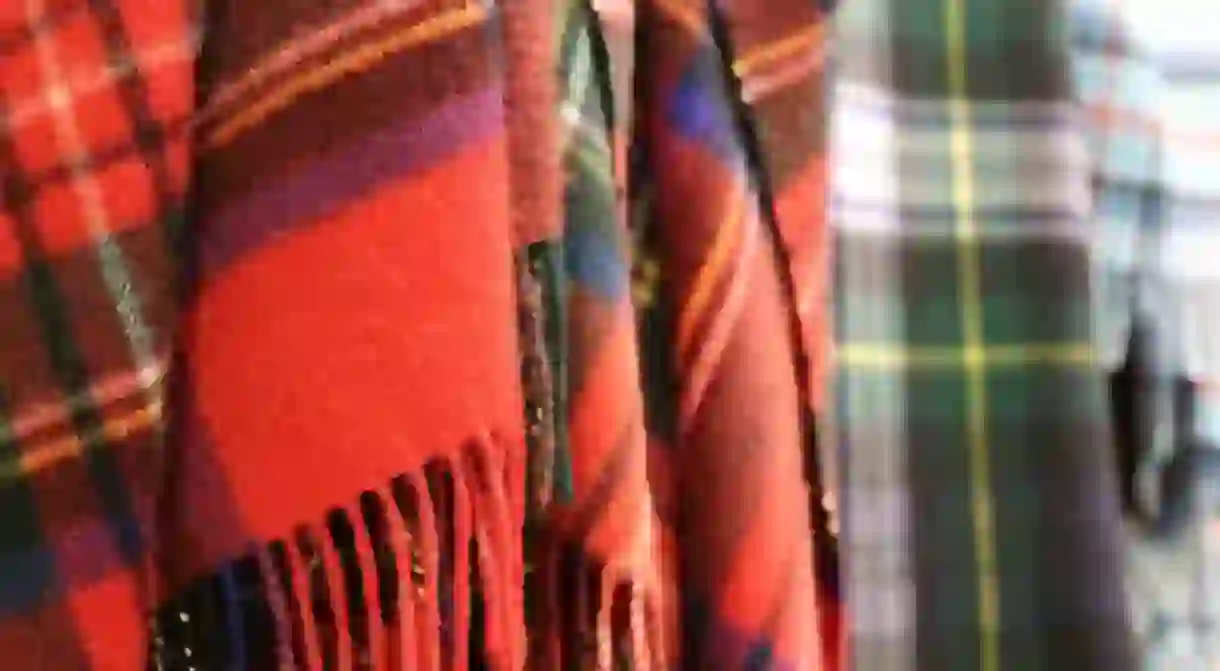The History Of Tartan In 1 Minute

Tartan and Scotland go together like neeps and tatties. It is perhaps one of the most recognizable patterns of all time with its overwhelming number of types, varying shades, materials, and tones. The criss-crossing of colors and perfectly placed checkered prints are typically found on kilts. Undoubtedly, Tartan is deeply interwoven with history.
Many associate tartan with the Scottish clan system — quite rightly so. However, it is important to note that before this was the case, it was simply a practical cloth that provided warmth. Initially, regions and districts (not clans) could be detected from the colors of the cloth. These colors came from natural dyes, which were specific to certain areas.

The first known utterance of tartan came from the lips of King James V in 1538. He requested that his tailor custom-make some perfectly fitting tartan attire. The clansmen were on the other side of the pecking order, though. Tartan to them was a gargantuan wad of thick cloth, which they draped over a shirt. Typically, the women or weavers chose the color based upon personal preference and nearby foliage. And so, it wasn’t always about the clans!

Tartan aside, the only way to identify ‘clans’ in battle back in the day was to observe the ribbon on a warrior’s bonnet (each family wore something distinguishable like heather, holly, or bracken). Time progressed and the Highlanders gravitated more towards the idea of using tartan as a means to distinguish between regions. Fast forward through battles and some cultural changes — like the union of Scotland and England — to find that tartan started to also symbolize clans. In fact, the first recorded sighting of men in matching tartan was 1740, when a Regiment of Highland Volunteers (who later became the Black Watch) formed.

Long story short, the middle of the 19th century saw a significant social shift in matters. Every part of Scotland became draped in tartan as it evolved into a prominent and unifying national symbol. Not only that, though, the clans started to use the check-clothed pattern as a way to identify other clans, families, and even institutions. Today, tartan is still used to detect clans and families and is very much ingrained into Scottish heritage. Bonnie Scotland wouldn’t be the same without it!
By Tori Chalmers













